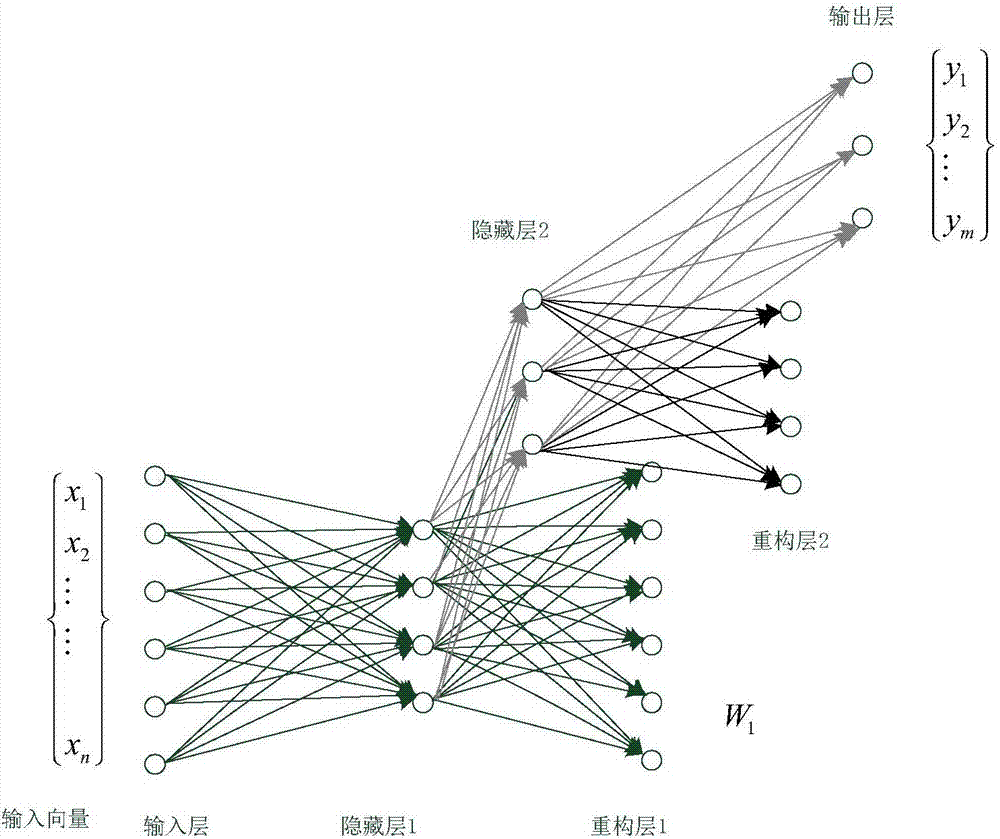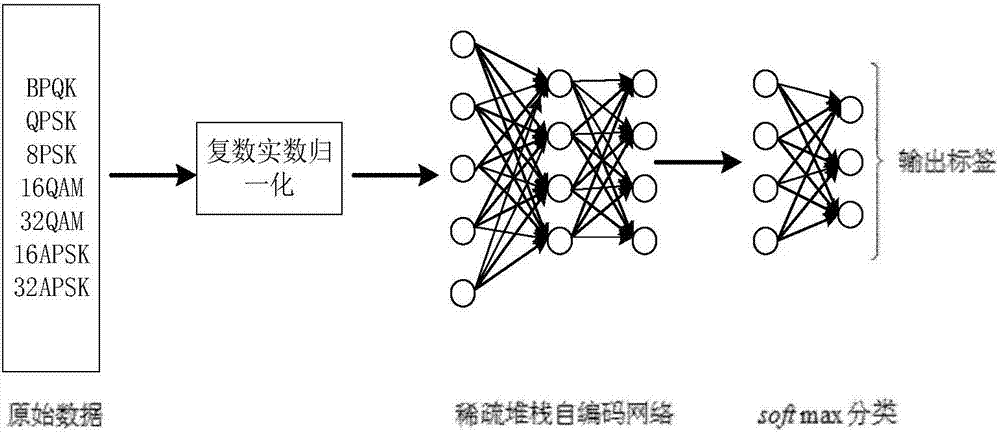Modulation type identification method based on sparse stack self-coding
A sparse auto-encoder and identification method technology, which is applied in the field of modulation pattern recognition based on sparse stack auto-encoding, can solve the problems of complex feature extraction and low recognition rate, and achieves excellent anti-noise performance, good recognition performance, and large error reduction. Effect
- Summary
- Abstract
- Description
- Claims
- Application Information
AI Technical Summary
Problems solved by technology
Method used
Image
Examples
Embodiment Construction
[0060] The implementation steps of the present invention will be further described in detail below.
[0061] Such as Figure 1-3 As shown, the modulation pattern recognition method based on sparse stack autoencoding, specifically includes the following steps:
[0062] Step 1. Modulation signals to be identified include BPSK, QPSK, 8PSK, 16QAM, 32QAM, 16APSK and 32APSK. Assuming that the noise of the modulated signal to be identified is Gaussian white noise and independent of the modulated signal, the down-converted signal is processed to obtain the baseband signal of the modulated signal;
[0063] Step 2. Perform one-dimensional vectorization and normalization on the baseband signal, as follows:
[0064] 2-1. Use the quadrature receiver to receive the baseband signal and perform down-conversion to obtain the complex baseband signal as follows:
[0065]
[0066] Among them, N is the sequence length of the sending end symbol, a k Represents the symbol sequence, P(t) repre...
PUM
 Login to View More
Login to View More Abstract
Description
Claims
Application Information
 Login to View More
Login to View More - R&D
- Intellectual Property
- Life Sciences
- Materials
- Tech Scout
- Unparalleled Data Quality
- Higher Quality Content
- 60% Fewer Hallucinations
Browse by: Latest US Patents, China's latest patents, Technical Efficacy Thesaurus, Application Domain, Technology Topic, Popular Technical Reports.
© 2025 PatSnap. All rights reserved.Legal|Privacy policy|Modern Slavery Act Transparency Statement|Sitemap|About US| Contact US: help@patsnap.com



